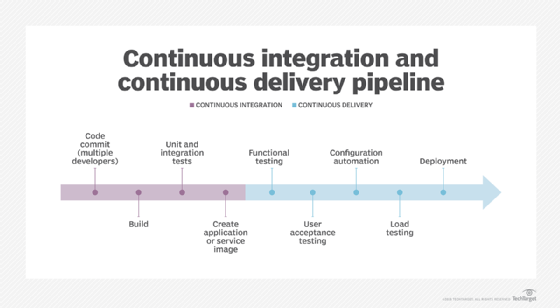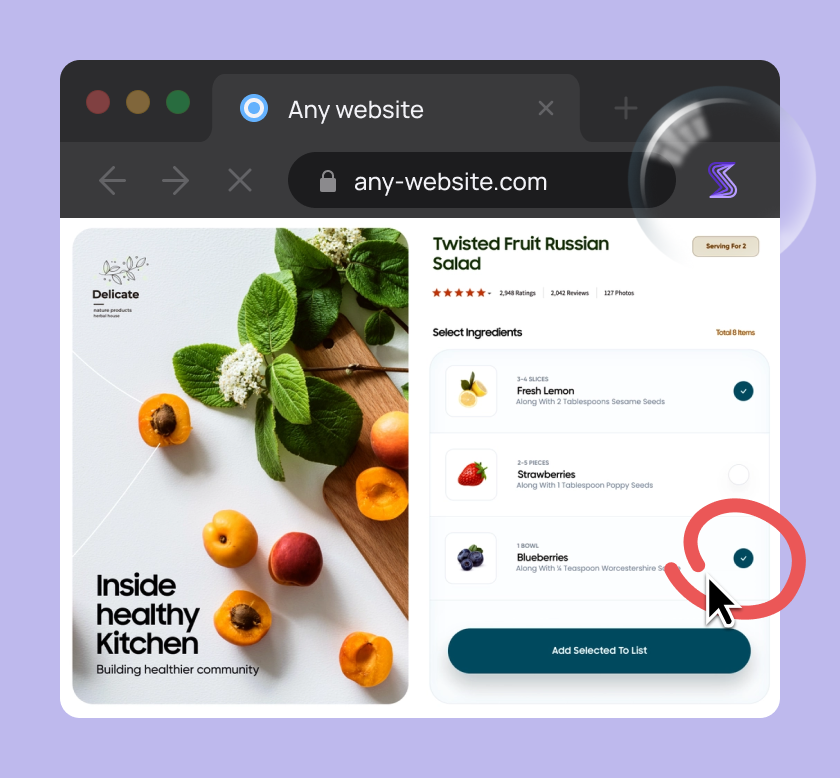
A lot of people want to be in tech leadership. It’s a dream job, it pays well, and it has the appeal of awarding you the reputation of a Silicon Valley genius.
But what is that like, really? What are the responsibilities of a modern tech lead?
In a nutshell, there are three main areas every good tech lead needs to cover: managing the team, managing the projects, and managing the onboarding and mentorship of new team members.
In this article, we’re going to give you an idea of what you’ll need to know—and what areas you might need help with—as you start leading a tech team.
Let’s dive right in!
Table of Contents
Define best practices for work processes
One of the most important things you can do to ensure the team’s success is to specify what best practices look like, set expectations accordingly, and then help everyone execute those standards.
Why is this so imperative?
Because without the standards clearly defined, you’re likely to end up with a jumble of work styles and interpretations that are difficult to navigate.
Defining tech best practices helps your team to be more efficient, productive, and happier.
It also prevents confusion from creeping in when developers aren’t sure what procedures they should be following and why.
However, as Trevin Chow, chief product officer at Sketchy, clearly states, best practices aren’t a silver bullet and may not always result in the desired outcome.

But if you and your team take into consideration what’s worked in the past, you’ll have a much better chance of success.
But how do you go about defining best practices?
Well, you can start by creating documentation that details all of the ways you expect your team members to approach technology-related issues.

Get unreal data to fix real issues in your app & web.
Luckily, there is a wide array of such documentation, and one of them is undoubtedly product requirement documentation.
For example, if you take a look at the outline below, you’ll notice that product requirement documentation is, in essence, the detailed description of a product.

It’s a set of written instructions that explain to the developers how a piece of software should be built, and it ranges from a list of objectives and goals, through detailed descriptions of best standards, and all the way to safety and security.
This documentation is normally used as a reference by developers, testers, and others who need to know what the final product will look like, and what best practices they should follow along the way.
Therefore, it’s a good place to start setting the rules and procedures for your team.
Next, you should also have source code documentation in place.

As you can see in the picture, it’s a set of text and explanations that defines how the program works, what a piece of code does, and provides context for the developer.
This documentation is meant to be read by those who will modify the code, which usually entails other developers on a team.
As such, it’s indispensable for ensuring that all team members are always on the same page when it comes to coding.
Of course, there is also other documentation that you can use to outline best practices. We mentioned just a few of them to give you a better picture.
Keep in mind that software development is a fast-paced field with new trends and practices coming out every day. It can be hard to keep up.
But that shouldn’t stop you from establishing clear standards of what constitutes best practices for your team.
It’s the only way to ensure everyone has a consistent understanding of what they’re building, while also making sure that they’re being productive.
Set up the technical direction for the product
By description, the technical lead is the main person responsible for leading, monitoring, and overseeing the technical aspects of what the team is working on.
Therefore, you as a tech lead will most likely be accountable for determining which technology, programming languages, and tools to use in your team to accomplish tasks.
Or, as the picture clearly shows, achieving technical excellence will mainly be resting on your shoulders, meaning that everything from enforcing technical practices to the architecture of the application will be up to you.

That suggests that if the company decides that it needs new software, for example, you’ll be responsible for choosing between frameworks and platforms based on your experience with them, as well as the requirements of the project, and your team’s aptitude.
Keep in mind that although you may want to use a certain programming language to accomplish a task, if it isn’t familiar to most of the team members, they might not be able to work on the project efficiently.
That’s why it’s important for a technical lead to also make sure that everyone on the team is comfortable with the tools and technologies used in their projects.
According to the Stack Overflow Developer Survey for 2021, the most commonly used programming, scripting, and markup languages among professional developers are JavaScript, Python, Node.js, and C#.

It’s worth taking information like this into consideration when deciding on the technical aspects of the project.
The programming language used will greatly influence the speed with which the product is created in your team, and its overall quality.
Therefore, as Paweł Ledwoń, CTO at Pusher, states, you should set the direction for the team because it’s the only way to ensure that everyone is speaking the same language when it comes to technical requirements.

From everything that’s been said, it’s pretty clear that a tech lead should be a person that has a strong technical background.
This means that they should have a clear understanding of the technologies they’re working with in order to be able to make informed decisions about the best tech stack to be used on a given project.
Tracking progress
When people think of tracking progress in software development, they probably picture developers making sure that the code is well-written, that the test cases are comprehensive, and the release is bug-free.
While these are all important factors in ensuring high-quality software, they’re not the only things you, as a tech lead, should be paying attention to.
In order to assess whether a software release is meeting its quality expectations, it’s important that the tech lead monitors how much time and effort goes into activities like managing environment configurations, deploying code to the production environment, and monitoring the health and performance of deployed code.
And one of the best ways to do that is by implementing CI/CD activity metrics monitoring.
In a nutshell, continuous integration and the continuous delivery pipeline is a process for automating the build, test, and deployment of code.

It requires all developers to commit their code to a shared mainline repository at least once a day.
Each change to the mainline triggers an automated build and test cycle to verify that new features haven’t broken existing ones. If any problems are found, they can be fixed immediately.
Therefore, CI/CD activity metrics monitoring is very important as it provides visibility into the health of your pipeline by identifying trends and anomalies that are occurring over time.
There are different CI/CD activity metrics that you can track depending on the type of projects you’re working on.
Take a look at how Datadog, one of the monitoring platforms in the market, performs scanning of the pipeline activity, to get a better understanding.

For example, if you’re testing new features or bug fixes, you’ll probably want to focus on code quality metrics such as code coverage or code complexity.
On the other hand, if you’re dealing with production deployments, it’s better to start by ensuring that all your tests are passed successfully before moving on to monitoring infrastructure health indicators.
Either way, tracking these metrics will help you understand how your team is performing and allow you to identify areas where improvements are needed.
Additionally, when you’re a tech lead, it’s also your job to make sure the developers are hitting their deadlines and hitting them well.
You want to keep tabs on what’s going on with all the different parts of the project, and you want to know if there are any problems that need fixing before they become too big to handle.
Therefore, you might use traditional project management tools or software like JIRA or Trello to monitor your team’s progress.

As you can see in the Jira example, breaking down what needs to be done, what’s is being done, and what’s finished into specific tasks, assigning each task its own metrics, and then tracking those metrics over time, you can get a better picture of how well your team is performing and if there are bottlenecks that are slowing down the project.
Remember, depending on where you work, the metrics that you use may be quite different from those in other companies.
There’s nothing necessarily wrong with that—the metrics you’re using are a reflection of the environment in which you operate, which can vary based on the type of product and the goals of the project.
Support the team
As a tech lead, you probably spend a lot of time thinking about how to get the best product out the door. You’re also most likely devoting about 30% of your time to coding.
Still, it’s important to remember that one of your core responsibilities is also to support your team members.
Your job is more than just leading the technical side of things and helping make decisions about architecture and coding guidelines.
You also need to help your team with any professional or personal issues that may come up.
It’s also important to recognize that challenging projects can have an effect on a person’s mental health and well-being—working long hours, increased workloads, or even burnout can all take their toll on developers’ ability to work.
In fact, according to a Haystack study, 83% of developers suffer from burnout, while 81% report that their levels of burnout increased during the pandemic.

When participants of the study were asked to state the main reasons that led to their feelings of burnout, they cited high workloads, unclear goals and targets, lack of communication, unrealistic demands, and lack of support as the primary causes.
And these are all aspects in which you as a tech lead have a say and can influence.
So if you suddenly notice too many bugs in the code, disengagement among your team members, or that they’ve become cynical, be on the lookout as these are some of the telltale signs of burnout.
Additionally, Nik Froehlich, founder and CEO of Saritasa, thinks that you can do a great deal to support your team by simply creating a positive work environment, where team members are protected from unreasonable requests from both project managers and clients.

Paramount for creating this kind of environment is also instilling in team members the notion that they’re allowed to make a mistake—as this is the best way for them to feel comfortable in their jobs, and therefore the best way to get the best work out of them.
The bottom line is, sometimes you’ll just have to step up and be the buffer zone between them and the managers and create an environment where they feel safe taking risks.
As you can see, it’s not easy being a tech leader—you’re expected to be an instructor, mentor, and coach, all in one.
You have to know how to support your team members as they learn and grow. You have to help them overcome challenges, be they technical or personal. And that is not an easy task.
However, with a little practice and willingness to be there for your developers, you can become the supportive leader they need.
Mentor and onboard new team members
Let’s face it: no one likes the feeling of being thrown in at the deep end and expected to know how to swim before they hit the water.
And when new developers join the team, this is how they might feel on their first day in the company.
The team’s existing codebase might be unfamiliar to them, their colleagues may not be able to explain things in plain English, and it might seem like everyone else already has a firm grasp of how everything works.
A good tech lead will make sure that doesn’t happen by providing help and guidance during the transition period.
And one of the best ways to do that is to create a developer handbook to help them better understand the technical landscape, just like Apptension did.
Their Developer handbook provides information on the most common technical questions and requirements new developers might encounter at an interview, during onboarding, and when planning a career in the company.

As you can see in the picture, it encompasses all sorts of areas, such as technical stack, technical guides, code of conduct, and onboarding materials.
What is particularly handy is that they’ve incorporated documents for three different levels of new hires: juniors, regular developers, and senior ones.
Most of the time, when we think about onboarding, the first thing that crosses our minds is juniors and not-so-experienced developers.
But, new regular and senior developers also join the teams all the time, so it’s good to set the stage for them too.
Apptension did just that by providing checklists of what all three levels of developers are supposed to know when they join the team, as the picture below clearly depicts.

And that can be a good practice to follow as it speeds up the onboarding procedure and enables employees to learn the ropes faster.
In some cases, new hires will finish the training elsewhere, and join your team afterward.
In this scenario, you’ll most likely be their mentor and offer them advice, guidance, feedback, and answers to whatever concerns they might have.

Capture, Annotate & Share in Seconds with our Free Chrome Extension!
For instance, at Amazon, new developers first go through engineering orientation, where they get familiar with standards and best coding practices.
After they’ve been assigned to the team, it’s the team lead’s responsibility to mentor them and make sure they get up to speed quickly.
However, even though it’s important to set aside time for mentoring and onboarding activities, it’s also essential to have an open-door policy so that new hires can always come to you with questions about their work or about the company at large.
That way, you can truly become a resource for them and make yourself available whenever they need mentorship advice and direction.
Conclusion
Modern tech leaders are expected to have a deep understanding of the product’s technology stack and how all the pieces fit together.
They’re also tasked with ensuring that a team is efficient and effective.
A good tech lead helps developers grow their careers, supports them when they take on new assignments and provides mentorship when they need it most.
It’s not an easy job as it requires extensive knowledge, dedication, and emotional intelligence.
In this article, we tried to highlight some of the most important responsibilities of modern tech leads.
We hope that you found it useful and insightful and that it’ll inspire you to improve your leadership skills and become a better tech lead.





